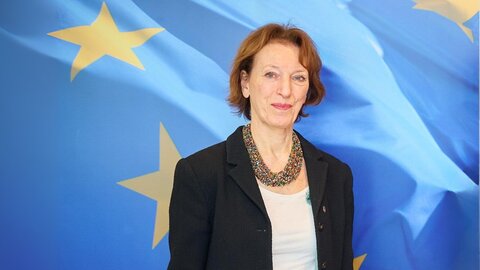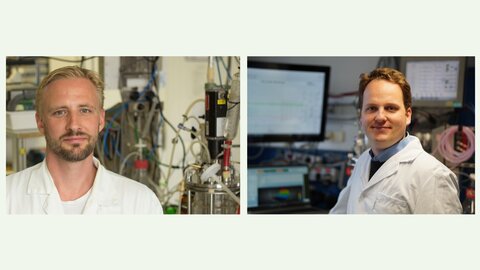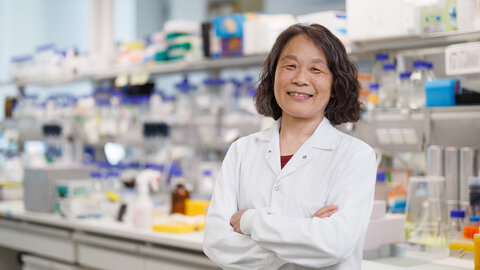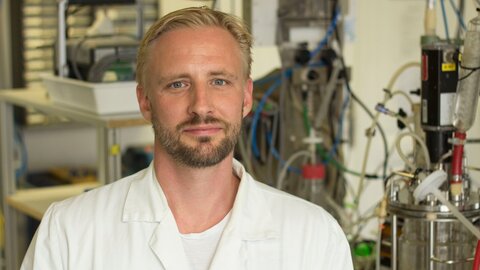UV light to help in understanding climate change
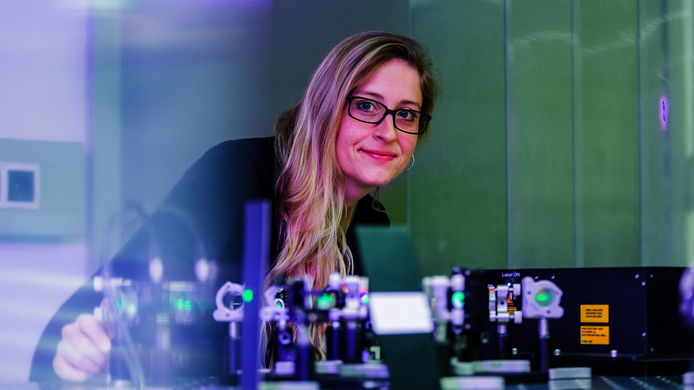
FWF: Your measurement method is utterly new. What is it all about? Birgitta Schultze-Bernhardt: In principle it’s about spectroscopy. We fan out light according to colour – like a rainbow. When you place a sample in this fanned out beam, you will find that different colours are absorbed to different degrees, and the resulting signature can be very characteristic of a particular element, like a fingerprint. FWF: What are the special characteristics of your method? Schultze-Bernhardt: We use an experimental array that constitutes a light source and a spectrometer all in one. The special feature is very stable lasers, so-called laser frequency combs. They were invented by my doctoral supervisor Theodor Hänsch and gained him the Nobel Prize for Physics in 2005. These lasers usually work in the infrared range. This is a good thing and very handy, because it enables us to study the vibrations and rotations of molecules very well. However, we still do not have such a laser that emits directly in the UV range, although that is a particularly interesting range. FWF: Why is that? Schultze-Bernhardt: Because UV light excites chemical reactions. The problem is that lasers cannot emit UV light because there are no amplification media for such wavelengths. And whilst there is a way to use optical methods to convert infrared light into ultraviolet light, the process is very inefficient. We use high-performance lasers in order to have just enough UV light left over to do our experiments. Laser technology has evolved in recent years and I have worked very hard on this method in my doctoral and post-doctoral work, so we are now finally ready to use it for spectroscopy. Thanks to this light source we can make measurements a million times faster than comparable, traditional spectrometers. And that is very exciting.
FWF: What are you going to examine with it? Schultze-Bernhardt: A great deal is known about how infrared radiation interacts with the atmosphere, but a good deal less is known about the ultraviolet range. This radiation is so rich in energy that it can trigger many photochemical processes in the atmosphere. Via cascades of different effects, these processes generate infrared radiation that heats up the atmosphere. But the processes also produce new molecules by breaking down air constituents, such as nitrogen dioxide, which can convert to ozone through further processes. My project offers a very special opportunity: to work with very high spectral resolution and a very broad bandwidth – with many colours at once, if you like. This will enable us to investigate complex gas mixtures and, moreover, to do it at a very high level of time-resolution. So we can actually record a video of chemical processes at the lab in real-time as they may also occur in the atmosphere. FWF: What will the first step be? Schultze-Bernhardt: As mentioned before, the lasers we use emit in the infrared range, and in a first step we can convert their light into visible light by means of nonlinear optics. And we will proceed from there, step by step, shifting the light into the blue and purple spectral range and finally into the UV range. In fact, there are different gases of atmospheric relevance in each of these spectral windows, which have their own unique behaviours. In visible light we want to start with nitrogen dioxide. FWF: What does winning the START Award change for you? Schultze-Bernhardt: For me it is, of course, wonderful to be able to pursue precisely this goal in the coming years. I've had enough time to think about it in advance and to carry out preliminary studies. I know exactly what is interesting, what we want to look into, and I now have financial security to build on what I have developed since my doctorate. FWF: What is it about this work that motivates you particularly? Schultze-Bernhardt: I am a scientist, and scientists simply want to know things for certain. Some processes in complex gas mixtures such as the atmosphere are known in a somewhat approximative way. We know that this or that may happen. But we don't know precisely what the electrons do in all this and how fast they are moving. Having this opportunity to actually record these incredibly fast processes in the laboratory with the help of various tricks, and seeing that the result looks beautiful, to boot - that's what makes it fun. FWF: So it's your enthusiasm for the fundamentals. Or does applicability also play a role? Schultze-Bernhardt: My interest in that is growing. My background is exclusively basic research, and right now I find this new aspect very exciting, seeing that what I do can be of direct relevance to everyday life. I like the fact that rather abstract basic research may answer questions that are so important for all of us.
Birgitta Schultze-Bernhardt is a researcher at the Institute of Experimental Physics and the Institute of Materials Physics at the Graz University of Technology. Her research focus is on light, especially short-pulse lasers and frequency combs as special laser light sources and their applications.
About the project "ELFIS" stands for electronic fingerprint spectroscopy. The aim is to study light-induced chemical changes of molecules that occur in the atmosphere as trace gases. The frequency combs used for this purpose enable the researchers to carry out these investigations over a broad spectral range and at an extremely high time resolution in the femtosecond range – a femtosecond being a billionth of a second.
The START Prize The START programme of the Austrian Science Fund FWF is aimed at outstanding young researchers, giving them the opportunity to plan their research over an extended period and with a high degree of financial security. It is endowed with up to EUR 1.2 million and is one of Austria's most prestigious and most highly endowed awards alongside the Wittgenstein Award.

